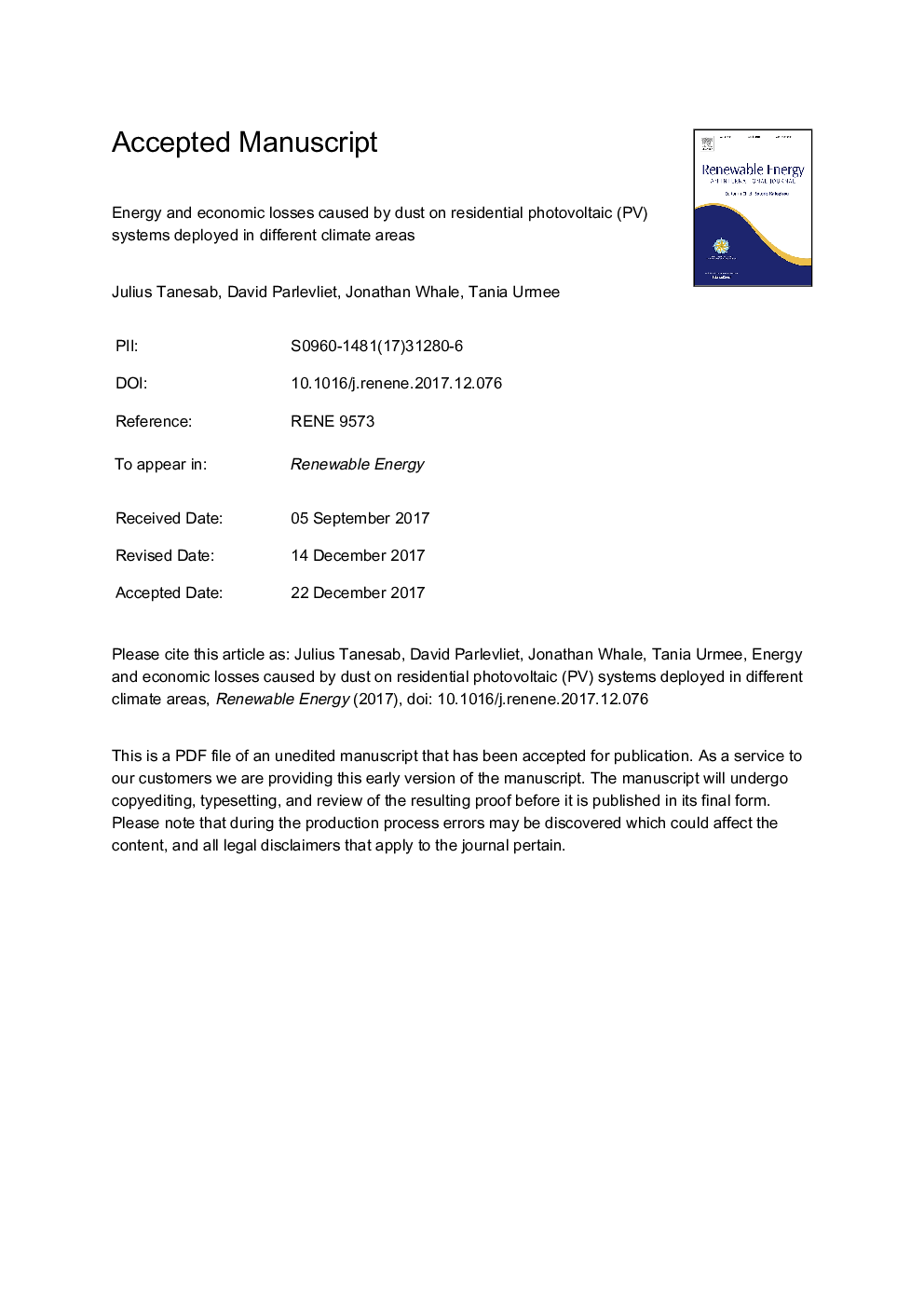| Article ID | Journal | Published Year | Pages | File Type |
|---|---|---|---|---|
| 6764849 | Renewable Energy | 2018 | 25 Pages |
Abstract
Results of the study revealed that when dust impinged on the surface of the PV modules, monthly maximum power output of a 1.5â¯kWp system in Perth, Australia and a 50 Wp system in Nusa Tenggara Timur (NTT), Indonesia decreased, on average, by about 4.5% and 8%, respectively. Economic modelling showed that, the cost of production per kWh lost due to dust exhibited by these systems were A$ 0.26/kWh and A$ 0.15/kWh, respectively. Comparison of the cost of energy losses and maintenance revealed that, the Perth system would require manual cleaning in October while the system in NTT would require cleaning in August and October. Although the saving in production losses is not economically significant, this cleaning schedule was recommended, particularly for small systems in NTT since the extra output can have a significant effect on the quality of life in remote villages. The key finding was that higher dust de-rating factors and more cleaning activity may be more appropriate for PV systems deployed in tropical climate areas than that in temperate climate regions. It is recommended that PV system Standards that use the 5% performance de-rating factor due to soiling are reviewed and consideration given to climate-dependent de-rating factors.
Related Topics
Physical Sciences and Engineering
Energy
Renewable Energy, Sustainability and the Environment
Authors
Julius Tanesab, David Parlevliet, Jonathan Whale, Tania Urmee,
